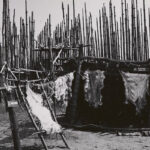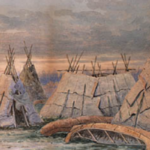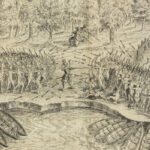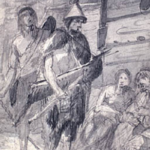The Samson Cree Nation: Pillars of Resilience on the Central Plains
The Samson Cree Nation, one of the Four Nations of Maskwacîs, is part of the larger Plains Cree people who have lived on the central plains of Alberta and Saskatchewan for thousands of years. Situated in central Alberta, the Samson Cree are renowned for their cultural resilience, governance traditions, and advocacy for Indigenous rights. Their story is one of adaptation and perseverance, shaped by their deep connection to the land and their commitment to preserving their heritage in the face of immense challenges.
Ancient Origins: People of the Plains and Parklands
The Samson Cree Nation traces its roots to the Nehiyawewin-speaking Cree peoples, whose traditional territories span the central plains and parklands of Alberta and Saskatchewan. Archaeological evidence, including ancient campsites, stone tools, and remnants of buffalo jumps, demonstrates the Cree people’s presence in this region for over 10,000 years.
The central role of the buffalo in Samson Cree life is reflected in their seasonal movements, which followed the migration patterns of these animals. The Plains Cree were skilled hunters and stewards of the grasslands, relying on buffalo not only for sustenance but also for clothing, tools, and shelter.
Anthropologist Robin Fisher, in Contact and Conflict, writes, “The relationship between the Cree and the buffalo was not merely economic—it was deeply spiritual, rooted in principles of reciprocity and respect for the natural world.”
Governance and Social Structure
Samson Cree governance followed traditional systems rooted in consensus-based decision-making. Chiefs and councils were chosen for their leadership qualities, including wisdom, courage, and the ability to maintain harmony within the community. Elders played a central role in guiding the community, sharing knowledge, and ensuring the preservation of cultural practices.
The Samson Cree were organized into bands and family groups, each responsible for managing specific resources and territories. Ceremonial gatherings, including feasts and dances, reinforced social bonds and the cultural cohesion of the nation.
In Keeping the Stories Alive, anthropologist Marianne Ignace notes, “The Samson Cree’s governance practices were deeply intertwined with their cultural traditions, ensuring the well-being of both the community and the land.”
Spiritual and Cultural Traditions
The Samson Cree Nation’s spiritual worldview emphasizes interconnectedness and respect for all living beings. Ceremonies such as the Sun Dance, sweat lodge rituals, and seasonal feasts were central to their spiritual life, fostering renewal, healing, and unity.
Oral traditions played a vital role in preserving Samson Cree history, with stories passed down through generations to convey lessons about resilience, respect, and living in harmony with the environment. These stories often featured Wisakecahk, the trickster figure, who taught important moral and practical lessons.
First Contact with Europeans
The Plains Cree first encountered Europeans in the late 17th and early 18th centuries as fur traders expanded into the region. These interactions introduced new goods, such as firearms, metal tools, and textiles, which were quickly integrated into Cree life. However, European contact also brought devastating consequences, including the spread of diseases such as smallpox, measles, and influenza, which decimated Indigenous populations.
Historian Bruce Trigger, in Indigenous Peoples of Canada, describes these epidemics as “a demographic catastrophe that reshaped the cultural and social landscapes of Indigenous nations.”
Colonization and Treaty 6
The signing of Treaty 6 in 1876 marked a pivotal moment in the history of the Samson Cree Nation. Under this treaty, the Cree and other Indigenous nations ceded large portions of their traditional territories in exchange for promises of protection, healthcare, education, and assistance during times of famine or hardship. The treaty also included the famous “medicine chest clause,” which has since become a cornerstone of Indigenous advocacy for healthcare rights.
While Treaty 6 was intended to ensure the survival of the Cree people, its implementation often fell short of its promises. The establishment of reserves under the Indian Act confined the Samson Cree to smaller portions of their ancestral lands, disrupting their traditional ways of life. Residential schools further eroded their culture, as children were forcibly removed from their families and prohibited from speaking their language or practicing their traditions.
Margaret Conrad, in A Concise History of Canada, observes, “The experience of the Samson Cree under Treaty 6 highlights the systemic challenges faced by Indigenous nations in their struggle for justice and self-determination.”
Resilience and Cultural Revitalization
Despite the challenges of colonization, the Samson Cree Nation has demonstrated remarkable resilience. Efforts to preserve Nehiyawewin (Cree language) and restore traditional ceremonies have been central to their cultural revitalization. Programs focused on youth education and cultural transmission ensure that future generations remain connected to their heritage.
The Samson Cree have also been leaders in advocating for Indigenous sovereignty and economic self-sufficiency. The establishment of initiatives like the Samson Cree Economic Development Corporation reflects their commitment to building a sustainable future for their community.
Anthropologist Marianne Ignace notes, “The Samson Cree’s dedication to revitalizing their culture and asserting their rights is a testament to their resilience and determination.”
Environmental Stewardship
The Samson Cree Nation has long been a steward of the plains and parklands, managing resources with sustainability and respect for natural cycles. Their traditional ecological knowledge has guided their practices in hunting, fishing, and land management. In recent years, they have played a leading role in addressing environmental issues and protecting the biodiversity of their territory.
In The Resettlement of British Columbia, historian Cole Harris writes, “The Samson Cree’s approach to environmental stewardship reflects their deep understanding of the interconnectedness of cultural and ecological health.”
The Samson Cree Nation Today
Today, the Samson Cree Nation is part of the Four Nations of Maskwacîs, alongside the Ermineskin, Louis Bull, and Montana First Nations. Together, these nations collaborate on cultural, political, and economic initiatives. The Samson Cree Nation continues to thrive, balancing traditional practices with modern governance and economic development.
The Samson Cree Powwow, an annual event, celebrates Cree culture, bringing together community members and visitors to honor their traditions. Programs in language revitalization, cultural education, and youth mentorship ensure that the Samson Cree Nation’s heritage is passed on to future generations.
A Legacy of Strength and Renewal
The history of the Samson Cree Nation is a testament to their enduring connection to the central plains and their commitment to preserving their culture and traditions. From their ancient stewardship of the land to their leadership in cultural revitalization and Indigenous advocacy, the Samson Cree have maintained their identity and place within the dynamic landscapes of Alberta.
As Robin Fisher writes in Contact and Conflict, “The Samson Cree’s story is one of resilience and renewal, reflecting their strength and determination to preserve their way of life amidst profound change.”
References
- Barman, Jean. West Beyond the West: A History of British Columbia. University of Toronto Press, 1996.
- Carlson, Keith Thor. Living the River’s Legacy: The Fraser River and Coast Salish History. McGill-Queen’s University Press, 2011.
- Conrad, Margaret. A Concise History of Canada. Cambridge University Press, 2012.
- Fisher, Robin. Contact and Conflict: Indian-European Relations in British Columbia. UBC Press, 1997.
- Ignace, Marianne and Ronald E. Ignace. Keeping the Stories Alive: Language, Land, and Culture in Indigenous Communities. University of Toronto Press, 2008.
- Harris, Cole. The Resettlement of British Columbia: Essays on Colonialism and Geographical Change. UBC Press, 1997.
- Trigger, Bruce G. Indigenous Peoples of Canada. McGill-Queen’s University Press, 1992.
- Samson Cree Nation. Guardians of the Plains: Samson Cree History and Advocacy. Samson Cree Publications, 2010.
- Treaty 6 Elders. Spirit of the Treaties: Stories from Treaty 6. University of Alberta Press, 1998.
- Maskwacîs Cultural Society. Preserving Our Stories: The History and Traditions of the Four Nations. Maskwacîs Press, 2015.



